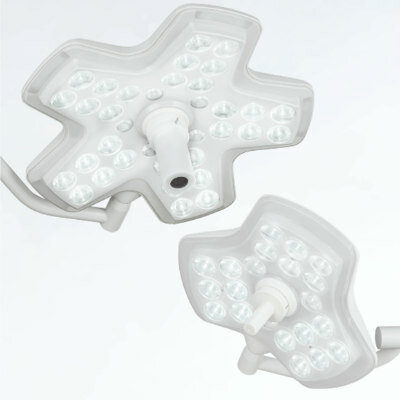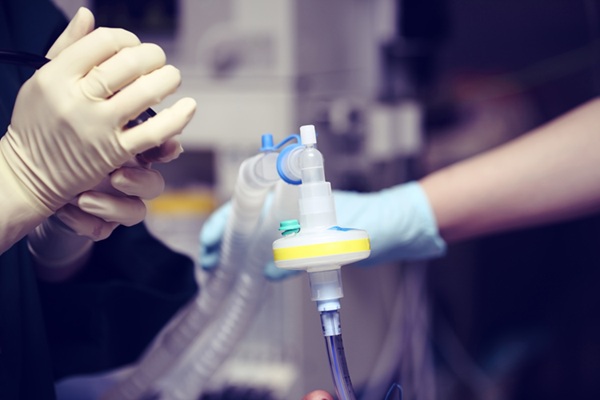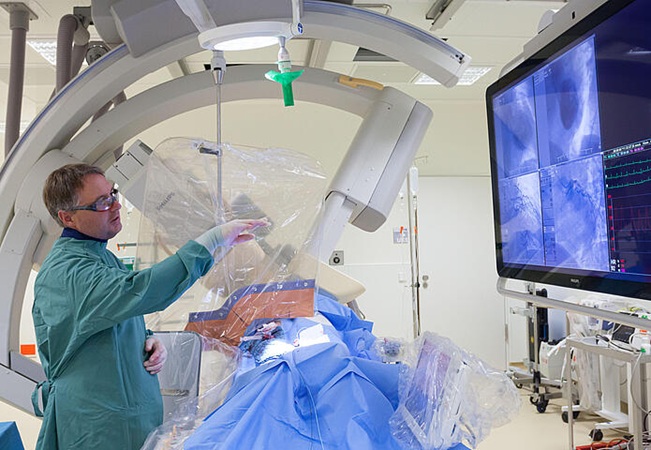Ingestible Balloon Helps Patients Lose Weight
|
By HospiMedica International staff writers Posted on 04 Oct 2016 |
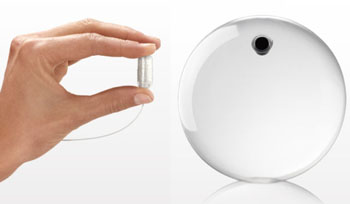
Image: An ingestible intragastric balloon system helps reduce weight (Photo courtesy of Obalon).
An ingestible intragastric balloon system facilitates weight loss in obese adults who failed to lose weight through diet and exercise.
The Obalon system consists of a balloon folded inside a capsule that is swallowed by the patient, with no sedation or anesthesia required. Once the balloon reaches the stomach, it is remotely inflated via an attached micro-catheter that is subsequently removed, leaving behind a buoyant balloon with a volume of 250cc (about the size of a small orange) that weighs less than six grams. Over the following three months of treatment, two additional balloons are swallowed and inflated, bringing the total maximum displaced volume to750cc.
The nonsurgical weight loss system is fully reversible throughout the course, and at the end of the six-month treatment period, all three balloons are mandatorily removed via endoscopy under conscious sedation. The system is intended for use as an adjunct to a moderate intensity diet and to a behavior modification program. The Obalon balloon system is a product of Obalon (Carlsbad, CA, USA), and has been approved by the U.S. Food and Drug Administration (FDA).
“We’re excited to bring this novel technology to the approximately 70 million adults in the United States who are struggling with obesity. For physicians, we believe that the Obalon technology represents an important new option for both their practices and their patients who are obese and looking to lose weight,” said Andy Rasdal, CEO of Obalon. “I’d also like to recognize the FDA for their efficient and interactive review of our product, which represents another option for physicians and patients in the battle against the obesity epidemic.”
“The clinical trial design for the Obalon balloon system was highly rigorous and the system demonstrated a favorable safety profile,” said Shelby Sullivan, MD, director of the gastroenterology bariatric and metabolic program at the University of Colorado School of Medicine (Aurora, USA). “We were also pleased to see that patients tolerated the administrations of the Obalon balloon remarkably well, with no recovery time needed. This is in contrast to other currently approved intragastric balloon devices, where most patients cannot immediately return to normal activities.”
Related Links:
Obalon
The Obalon system consists of a balloon folded inside a capsule that is swallowed by the patient, with no sedation or anesthesia required. Once the balloon reaches the stomach, it is remotely inflated via an attached micro-catheter that is subsequently removed, leaving behind a buoyant balloon with a volume of 250cc (about the size of a small orange) that weighs less than six grams. Over the following three months of treatment, two additional balloons are swallowed and inflated, bringing the total maximum displaced volume to750cc.
The nonsurgical weight loss system is fully reversible throughout the course, and at the end of the six-month treatment period, all three balloons are mandatorily removed via endoscopy under conscious sedation. The system is intended for use as an adjunct to a moderate intensity diet and to a behavior modification program. The Obalon balloon system is a product of Obalon (Carlsbad, CA, USA), and has been approved by the U.S. Food and Drug Administration (FDA).
“We’re excited to bring this novel technology to the approximately 70 million adults in the United States who are struggling with obesity. For physicians, we believe that the Obalon technology represents an important new option for both their practices and their patients who are obese and looking to lose weight,” said Andy Rasdal, CEO of Obalon. “I’d also like to recognize the FDA for their efficient and interactive review of our product, which represents another option for physicians and patients in the battle against the obesity epidemic.”
“The clinical trial design for the Obalon balloon system was highly rigorous and the system demonstrated a favorable safety profile,” said Shelby Sullivan, MD, director of the gastroenterology bariatric and metabolic program at the University of Colorado School of Medicine (Aurora, USA). “We were also pleased to see that patients tolerated the administrations of the Obalon balloon remarkably well, with no recovery time needed. This is in contrast to other currently approved intragastric balloon devices, where most patients cannot immediately return to normal activities.”
Related Links:
Obalon
Latest Critical Care News
- 'Smart' Shirt Detects Epileptic Seizures in Real Time
- Skin Patch Measures Effectiveness of Flu/COVID Vaccines in 10 Minutes
- Complete Revascularization Reduces Risk of Death from Cardiovascular Causes
- Tiny Fish-Inspired Robots Navigate Through Body to Deliver Targeted Drug Therapy
- Coronary Artery Stenosis Could Protect Patients from Pulmonary Embolism Effects
- Sweat-Powered Sticker Turns Drinking Cup into Health Sensor
- Skin-Mounted 3D Microfluidic Device Analyzes Sweat for Real-Time Health Assessment
- New Therapeutic Brain Implants to Eliminate Need for Surgery
- Stem Cell Patch Gently Heals Damaged Hearts Without Open-Heart Surgery
- Biomaterial Vaccines to Make Implanted Orthopedic Devices Safer
- Deep Learning Model Predicts Sepsis Patients Likely to Benefit from Steroid Treatment
- Programmable Drug-Delivery Patch Promotes Healing and Regrowth After Heart Attack
- Breakthrough Ultrasound Technology Measures Blood Viscosity in Real Time
- Magnetically Activated Microscopic Robotic Swarms Could Deliver Medicine Inside Body
- Frequent ECG Use Can Identify Young People at Risk of Cardiac Arrest
- Ultrasound Controlled Artificial Muscles Pave Way for Soft Robots
Channels
Surgical Techniques
view channel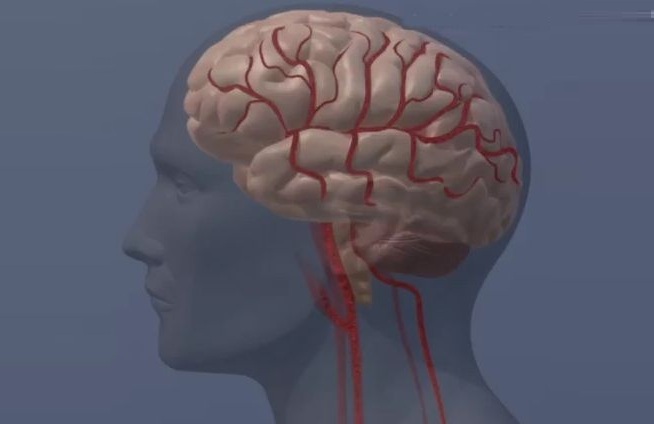
Ablation Reduces Stroke Risk Associated with Atrial Fibrillation
Atrial fibrillation (AFib) greatly increases the risk of stroke, blood clots, heart failure, and death, and millions of people in the U.S. are expected to be affected in the coming years.... Read more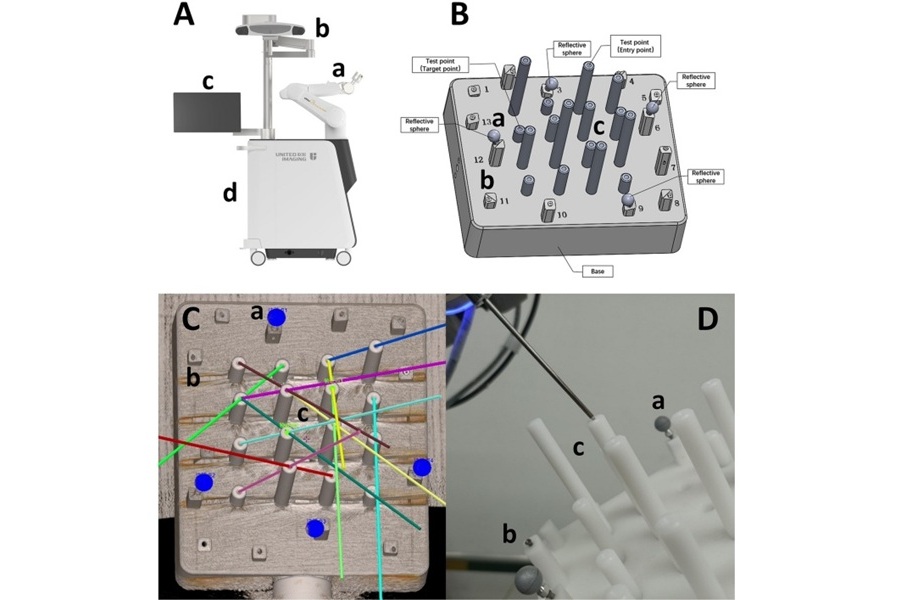
Optical Tracking Method Identifies Target Areas in Robot-Assisted Neurosurgery
Epilepsy occurs when nerve cells misfire and produce uncontrolled electrical bursts in the brain, leading to seizures. While most patients respond to medication, about 30% require more advanced intervention.... Read morePatient Care
view channel
Revolutionary Automatic IV-Line Flushing Device to Enhance Infusion Care
More than 80% of in-hospital patients receive intravenous (IV) therapy. Every dose of IV medicine delivered in a small volume (<250 mL) infusion bag should be followed by subsequent flushing to ensure... Read more
VR Training Tool Combats Contamination of Portable Medical Equipment
Healthcare-associated infections (HAIs) impact one in every 31 patients, cause nearly 100,000 deaths each year, and cost USD 28.4 billion in direct medical expenses. Notably, up to 75% of these infections... Read more
Portable Biosensor Platform to Reduce Hospital-Acquired Infections
Approximately 4 million patients in the European Union acquire healthcare-associated infections (HAIs) or nosocomial infections each year, with around 37,000 deaths directly resulting from these infections,... Read moreFirst-Of-Its-Kind Portable Germicidal Light Technology Disinfects High-Touch Clinical Surfaces in Seconds
Reducing healthcare-acquired infections (HAIs) remains a pressing issue within global healthcare systems. In the United States alone, 1.7 million patients contract HAIs annually, leading to approximately... Read moreHealth IT
view channel
Printable Molecule-Selective Nanoparticles Enable Mass Production of Wearable Biosensors
The future of medicine is likely to focus on the personalization of healthcare—understanding exactly what an individual requires and delivering the appropriate combination of nutrients, metabolites, and... Read moreBusiness
view channel
Philips and Masimo Partner to Advance Patient Monitoring Measurement Technologies
Royal Philips (Amsterdam, Netherlands) and Masimo (Irvine, California, USA) have renewed their multi-year strategic collaboration, combining Philips’ expertise in patient monitoring with Masimo’s noninvasive... Read more
B. Braun Acquires Digital Microsurgery Company True Digital Surgery
The high-end microsurgery market in neurosurgery, spine, and ENT is undergoing a significant transformation. Traditional analog microscopes are giving way to digital exoscopes, which provide improved visualization,... Read more
CMEF 2025 to Promote Holistic and High-Quality Development of Medical and Health Industry
The 92nd China International Medical Equipment Fair (CMEF 2025) Autumn Exhibition is scheduled to be held from September 26 to 29 at the China Import and Export Fair Complex (Canton Fair Complex) in Guangzhou.... Read more









